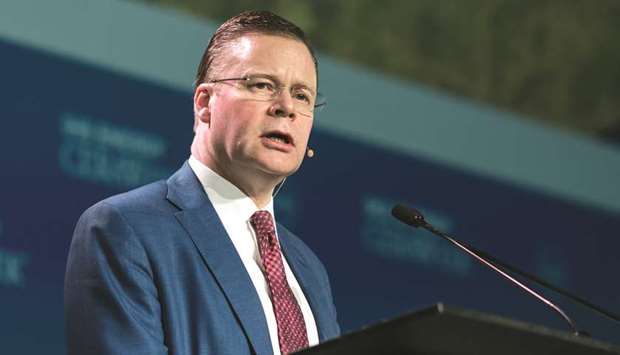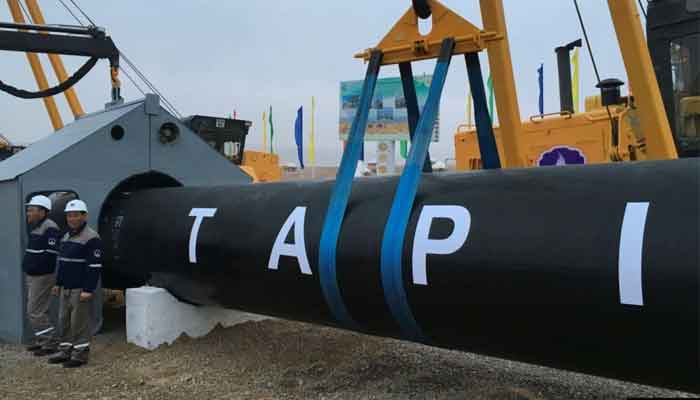Centrica CEO to quit after fi rst dividend cut in years

Bloomberg/London
Centrica said its chief executive officer will step down after a tumultuous five-year run at Britain’s largest energy supplier, which has lost two-thirds of its value and millions of customers during his term.
Iain Conn, 56, announced his departure along with Centrica’s first dividend cut since 2015. He will leave the board in 2020 after he finishes an effort to fortify the utility against increasing competition and a government cap on what it can charge for its electricity and natural gas.
Centrica shares fell as much as 13% in London to the lowest since 1997, the year the utility was spun out of the state-owned British Gas. Conn inherited a company that had under his predecessors diversified into oil and gas production and nuclear energy, businesses that Centrica now intends to sell.
In more recent years, smaller rivals have lured away tens of thousands of customers from Britain’s Big Six utilities. Centrica earnings were also hit in the first half as warm weather and operational issues cut its electricity supply by 4%.
Conn said his departure was a mutual decision with the board and the result of months of discussions. Conn is seeking to hand over a smaller entity focused on customer-facing businesses supplying power and energy services. The board will name a successor later.
While the company’s share price plunged to new lows, Conn said the company was on the right track and seeing the beginning of stabilisation. He said the earnings outlook is brighter for the rest of the year.
“This set of steps is a fundamental re-positioning of the company and is the end of a journey we began in 2015,” Conn said on a call with reporters yesterday. “We haven’t changed our strategy. We’ve made some adjustments, but the board has confirmed we need to keep going toward the customer.”
Unions were quick to criticise Conn’s plan to maintain the pace of job cuts he announced in February and step up a cost savings target.
Centrica is targeting £1bn ($1.2bn) of annual cost savings from this year through 2022, up by £250mn since February. The company maintained its estimate that it will shed 1,500 to 2,000 jobs this year from the some 30,520 it had at the end of 2018. “More of the same, more job cuts on top of the thousands already gone and going, are panic measures, not a credible plan for recovery,” said Justin Bowden, national secretary of the GMB union. “There must be a pause under a new CEO, investment and a new plan for growth.”
The board proposed an interim dividend of 1.5 pence a share, down from 3.6 pence for the same period a year ago. For the full year, the dividend will be cut to 5 pence a share, down from 12 pence in the last four years.
“The departure of Centrica’s CEO won’t resolve all of its problems, in our view, as many are outside management’s control,” Elchin Mammadov, analyst at Bloomberg Intelligence, wrote in a note. “The new team at the helm will need to focus on delivering further cost cuts and growth in energy supply and services.”
Customer numbers in Centrica’s main energy supply and services business fell 2% to 23.6mn in the first half of the year. Output from its 20% stake in Britain’s nuclear plants fell 19% in the first half to 4.9 terawatt-hours, reflecting outages at the Dungeness B and Hunterston B power stations.
“Centrica faced an exceptionally challenging environment in the first half of 2019, which impacted earnings and cash flows,” Conn said in a statement yesterday. “This major refocusing of our portfolio will unlock further efficiencies enabling us to be even more cost-competitive, as we focus on being a leading energy services and solutions provider.” Looking Ahead Conn maintained guidance for full year earnings. Nuclear plant outages that hit earnings in the first half are likely to pass, and cost savings set to kick in.
Centrica expects growth in its consumer businesses. In its connected homes business, growth accelerated 49% to 1.5mn.
In the months ahead, Centrica will work on selling its Spirit Energy unit, which produces oil and natural gas. It’s already divesting its stake in nuclear power plants, although the statement yesterday said nothing new about that process. Conn said Centrica will exit Spirit via a trade sale and use proceeds to restructure the company.
“We are completing the shift we began in 2015 from a company ill-equipped to deal with changes in the energy systems to one in tune with moving toward a lower-carbon economy,” Conn said. “Once we’ve made them, it is now time for me to hand over to a successor.”
Along with its shift toward a more customer-facing business, the company also wants to make money off the expansion of electric vehicles. It announced a new partnership with Ford Motor Co yesterday to develop charging stations at hundreds of dealerships across the UK and Ireland as well as sell home charging equipment and electric vehicle tariffs.
The company is in talks with other car companies to expand further into this area, Sarwjit Sambhi, head of Centrica’s consumer business, said on a call with reporters.









